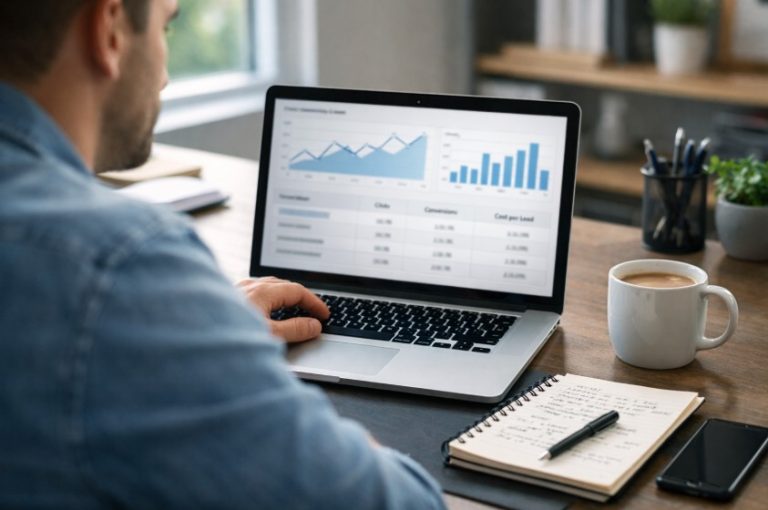As small businesses continue to recover from the economic impact of recent challenges, the focus shifts towards managing financial obligations such as Bounce Back Loan repayments. The Bounce Back Loan scheme has provided vital support to many entrepreneurs, but understanding and strategizing for repayment is essential for long-term financial health.
In this blog, we will explore insightful strategies tailored for small businesses to effectively handle Bounce Back Loan repayments. Join us as we uncover actionable tips and guidance to empower your business in navigating this crucial phase with confidence and success.
Understanding the Bounce Back Loan Scheme
The UK faced severe business problems due to the coronavirus. To help companies survive, the government launched the Bounce Back Loan Scheme. It let businesses get loans up to £50,000 without a personal guarantee.
Government’s COVID-19 Business Support Initiative
Introduced in March 2020, the Bounce Back Loan was key in the government’s COVID-19 initiatives for small businesses. It aimed to offer financial aid quickly and without needing to start repayments for the first year.
Eligibility and Terms of Bounce Back Loans
For businesses to access a Bounce Back Loan, they had to be UK-based and affected by the pandemic. Businesses also had to have been running before March 1, 2020. The loans could last up to 6 years, with interest set at a low 2.5% a year. This support scheme was vital for small businesses to overcome pandemic challenges.

Repaying Your Bounce Back Loan
Many companies are now close to a year after taking their Bounce Back Loans. Some find adding this cost puts a lot of stress on their finances. You might wonder what happens if you can’t pay back your Bounce Back Loan.
Monthly Repayment Plan
Originally, businesses had to start paying their loans back after 12 months. Now, they face monthly repayments. This can really hurt a company’s cash flow and management of their money.
The Pay As You Grow (PAYG) Scheme
In November 2020, the government stepped in with the Pay As You Grow (PAYG) scheme. This plan helps small businesses with Bounce Back Loans by offering:
- More time to repay – from 6 to 10 years, lowering monthly payments.
- The chance to pay only the interest for 6 months, possible 3 times over.
- A break from payments for up to 6 months.
The PAYG Scheme’s main goal is to give companies more leeway and a breather in paying back their loans. This way, it makes managing debts and money easier.

Consequences of Non-Payment
The Pay As You Grow (PAYG) scheme helps some small businesses. It gives them more time to repay their Bounce Back Loan. But for others, this won’t be enough. Some companies have more than one loan to pay. So, repaying everything might be too difficult. Can you get in trouble for not paying the Bounce Back Loan?
If a small business can’t pay back a Bounce Back Loan, HMRC might step in. The loan was meant to support businesses during COVID-19. So, they can check if the loan was used correctly. If you used the loan for something it shouldn’t have been used for, you might face trouble.
Usually, business owners aren’t responsible for the loan personally. But if HMRC finds out you misused the loan, the story changes. You could be hit with fines or even face criminal charges. It’s a big risk.
| Key Considerations | Explanation |
|---|---|
| HMRC Investigation | HMRC has the authority to investigate the use of Bounce Back Loans, and can take action if they find evidence of misconduct or fraud. |
| Personal Liability | Business owners are generally protected from personal liability for Bounce Back Loans, but this protection does not apply in cases of misuse or fraud. |
| Repayment Obligations | Companies are still legally required to repay their Bounce Back Loans, even if they are struggling financially. Failure to do so could lead to further action from HMRC. |
It’s very important for businesses with Bounce Back Loans to manage finances well. Pro advice and working with HMRC are key. They can help avoid bad outcomes from not paying or using the loan wrong.

Restructuring Options for Limited Companies
If your company is finding it tough to repay a Bounce Back Loan, but it’s still doing well, there are ways to lighten the load. Consider different options to restructure and refinance. Each can help with your short-term cash flow. You might think about:
- Time to Pay Arrangement (TTP) with HMRC: Got HMRC debts, like Bounce Back Loan payments? You could make a Time to Pay deal. This lets you pay back in smaller amounts over time. It makes financial stress easier for your business.
- Company Voluntary Arrangement (CVA): A CVA is a legal process that lets your company rearrange its debts, even Bounce Back Loans. It gives you a break and a solid plan to pay. Your business can keep going.
- Refinancing with Alternative Lenders: Try refinancing your Bounce Back Loan with someone else. You might get better terms or more time to pay. This can make managing your money and recovery easier for your company.
Getting advice from an expert, like an insolvency practitioner or an accountant, is key. They can help you choose the best way to restructure your company. Looking into these options could help you deal with paying back the Bounce Back Loan. And it might make your company’s finances stronger.
| Restructuring Option | Key Benefits | Potential Drawbacks |
|---|---|---|
| Time to Pay Arrangement (TTP) with HMRC |
|
|
| Company Voluntary Arrangement (CVA) |
|
|
| Refinancing with Alternative Lenders |
|
|

Liquidating a Company with a Bounce Back Loan
If a company has taken a Bounce Back Loan and then gone insolvent, the process gets complicated. The loan becomes a part of the company’s debt. An insolvency practitioner is brought in to handle the company’s closure. This is to make sure all money earned is given to the creditors, including the Bounce Back Loan lender.
When a company goes into voluntary liquidation, its financial records are checked by the insolvency practitioner. They figure out how much the company owes everyone, including the Bounce Back Loan. The debt from the Bounce Back Loan is put with the company’s other debts. The Bounce Back Loan lender is then paid, but they’re just one of the many creditors.
The Bounce Back Loan Scheme’s personal guarantee exemption doesn’t work in liquidation. Directors of the company could still be asked to pay the Bounce Back Loan’s remaining balance after liquidation if it’s not all paid back.
For small businesses hit hard by the pandemic, closing down with a Bounce Back Loan is tough. Getting advice from a good insolvency practitioner is key. It’s important for the company and the people it owes money to have the best result.
Bounce Back Loan Repayment
Creditors’ Voluntary Liquidation (CVL)
In liquidation, a Bounce Back Loan is handled like other loans. If a company goes bankrupt and starts a Creditors’ Voluntary Liquidation (CVL), this loan becomes a part of what the company has to pay. An insolvency practitioner will help figure out the best way to pay back money. They’ll speak to those the company owes, including the loan’s lender.
Misuse of Bounce Back Loan Funds
It’s important for businesses to use Bounce Back Loan money correctly. They should use it to help their company during the COVID-19 pandemic. The government, through HM Revenue and Customs (HMRC), is checking on loans to see if they are being used right.
If a business is found to be using the money in the wrong way, they could be in big trouble. This could mean getting removed from the companies register or having to pay back the loan personally.
Also, businesses have to include the Bounce Back Loan as income on their taxes. Failing to do so might lead to problems with HMRC and fines. It’s smart to get advice from experts to make sure everything is done right.
Top-Up Loans and Refinancing
Many businesses are facing tough times due to the pandemic’s effects. Luckily, they have a new opportunity to get extra financing. With the Bounce Back Loan Scheme, if a company borrowed less than the most it could, it might be able to get more money. Starting from 10 November, several big lenders will allow this extra borrowing. More lenders are expected to join soon.
This offer is especially good for small and medium-sized businesses (SMEs) trying to recover from the pandemic. By topping up their Bounce Back Loans, they can get more cash. This can help them with immediate money issues and keep their business running.
SMEs also have a chance to look into different plans for repaying their debts. The CBILS scheme is one such option. It allows businesses to replace several loans with one. This could make paying back debts easier and help with financial planning.
These new ways of getting funds are very good for SMEs. They can help businesses face and beat the challenges brought on by the pandemic. By choosing smart loan options and planning their finances well, companies can become stronger. This prepares them for better times ahead and growth in the future.
Avoiding Misconduct and Legal Consequences
The Bounce Back Loan scheme was set up to help small businesses quickly during the COVID-19 pandemic. Her Majesty’s Revenue and Customs (HMRC) is serious about stopping any misuse of these loans. If a business uses the bounce back loan wrongly, like by lying to get it or spending it on the wrong things, there could be big legal problems.
HMRC might start looking into a business for several reasons. This could be because the business’s tax records seem odd, they’ve seen strange financial moves, or they got a tip-off, maybe even from someone who didn’t give their name. If HMRC thinks the money wasn’t used as it should, they could look into it. This can lead to fines, penalties, or criminal charges. In very bad cases, the business might not be allowed to operate anymore. Then, the owners would have to settle any debt, even from their own money.
To prevent issues, it’s vital for businesses to keep very good records. They should also make sure the bounce back loan money is only spent on what it’s meant for. Being open with HMRC is also key. By being careful, honest, and working closely with the tax authority, businesses can safely handle paying back the bounce back loan. This way, they can stay away from any legal or money trouble.
Conclusion
As small businesses forge ahead in the post-pandemic landscape, mastering the art of Bounce Back Loan repayment is a critical step towards sustainable growth and success. By implementing smart strategies, staying proactive in financial planning, and seeking expert guidance when needed, small business owners can navigate the repayment process with confidence and resilience.
Remember, every payment made brings you closer to financial independence and stability. With careful planning and informed decision-making, your business can emerge stronger and more resilient than ever before. Here’s to a bright future filled with opportunities for growth and prosperity!
FAQs
How long was the interest-free period for Bounce Back Loans?
For the first year after getting a Bounce Back Loan, businesses didn’t need to pay back anything.
What options are available if a business is struggling to repay its Bounce Back Loan?
If paying back the loan is tough, businesses have choices. They can look into plans like the Pay As You Grow (PAYG) scheme. This allows for easier payments and even payment breaks. Such steps can really help with money flow issues if the business is starting to make a profit.
Can a business be held personally liable for a Bounce Back Loan?
Treat a Bounce Back Loan the same as any other money borrowed. If a business goes under and there’s a formal clearing of debt, the loan will be involved. Yet, directors aren’t usually held personally responsible, unless they have done something wrong.
What happens if a Bounce Back Loan cannot be repaid?
If a business can’t pay back the Bounce Back Loan and ends up in insolvency, the loan is looked at during the clearing of debts. But really, directors shouldn’t be individually responsible, unless they’ve misused the money.
Can a business top-up its original Bounce Back Loan?
Businesses can indeed top-up their initial Bounce Back Loan, if they borrowed less than what was available before. Large lenders began offering this service from 10 November 2020. Other lenders are also getting ready to join.
What are the consequences of misusing Bounce Back Loan funds?
Misusing the Bounce Back Loan could lead to serious consequences. HMRC might investigate and the company’s directors could face legal action. This may involve criminal charges or personal financial responsibility.





